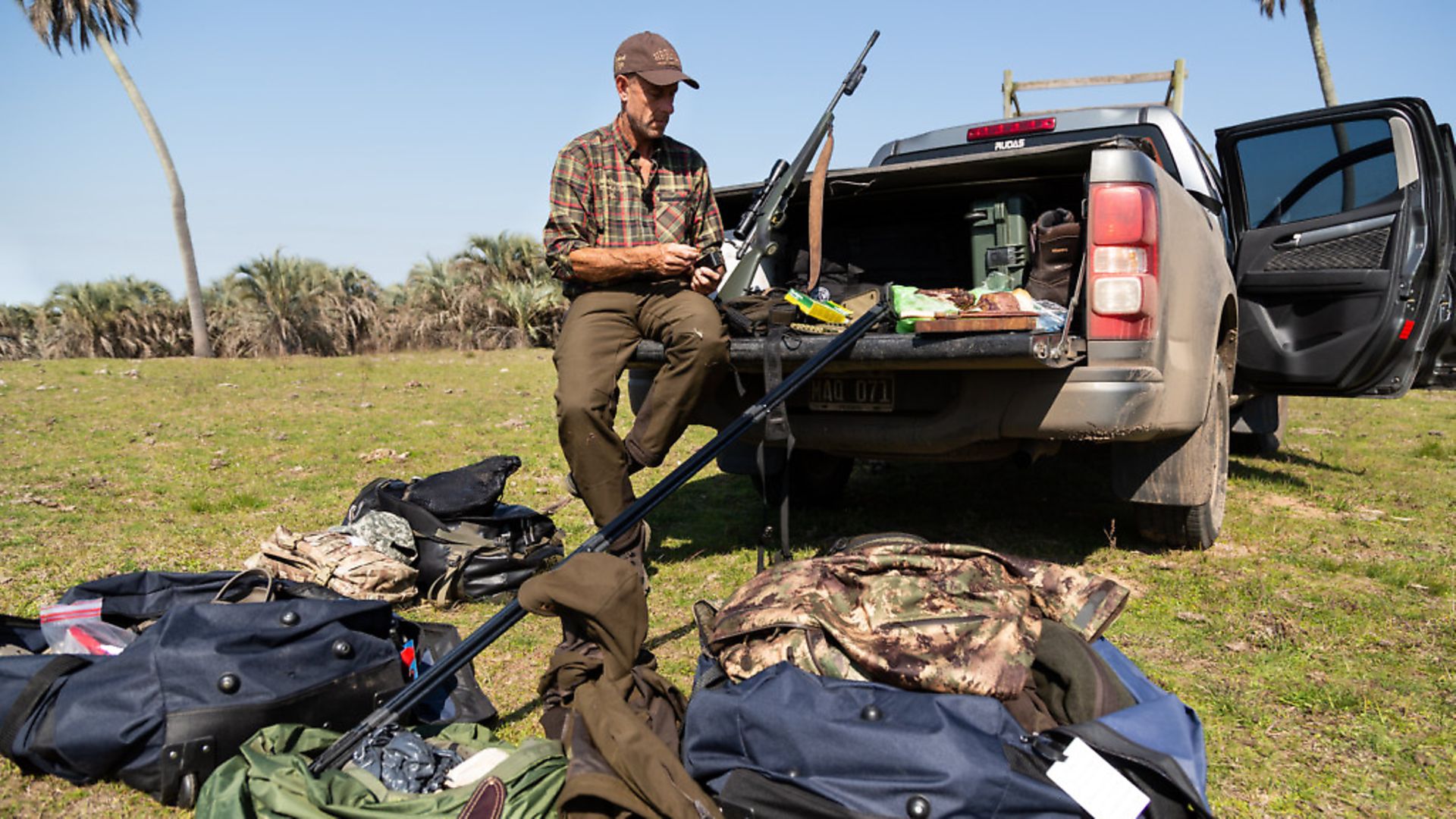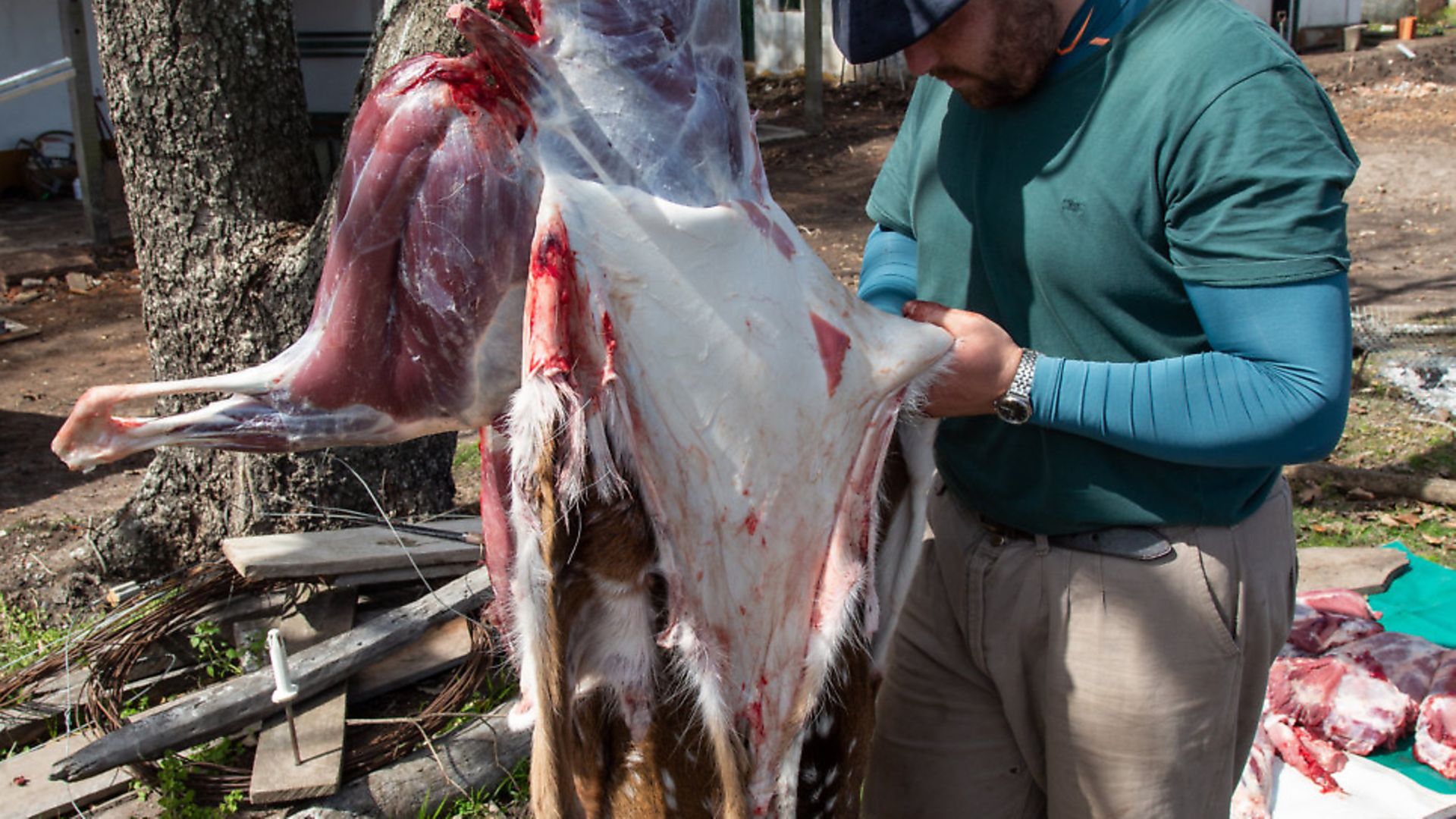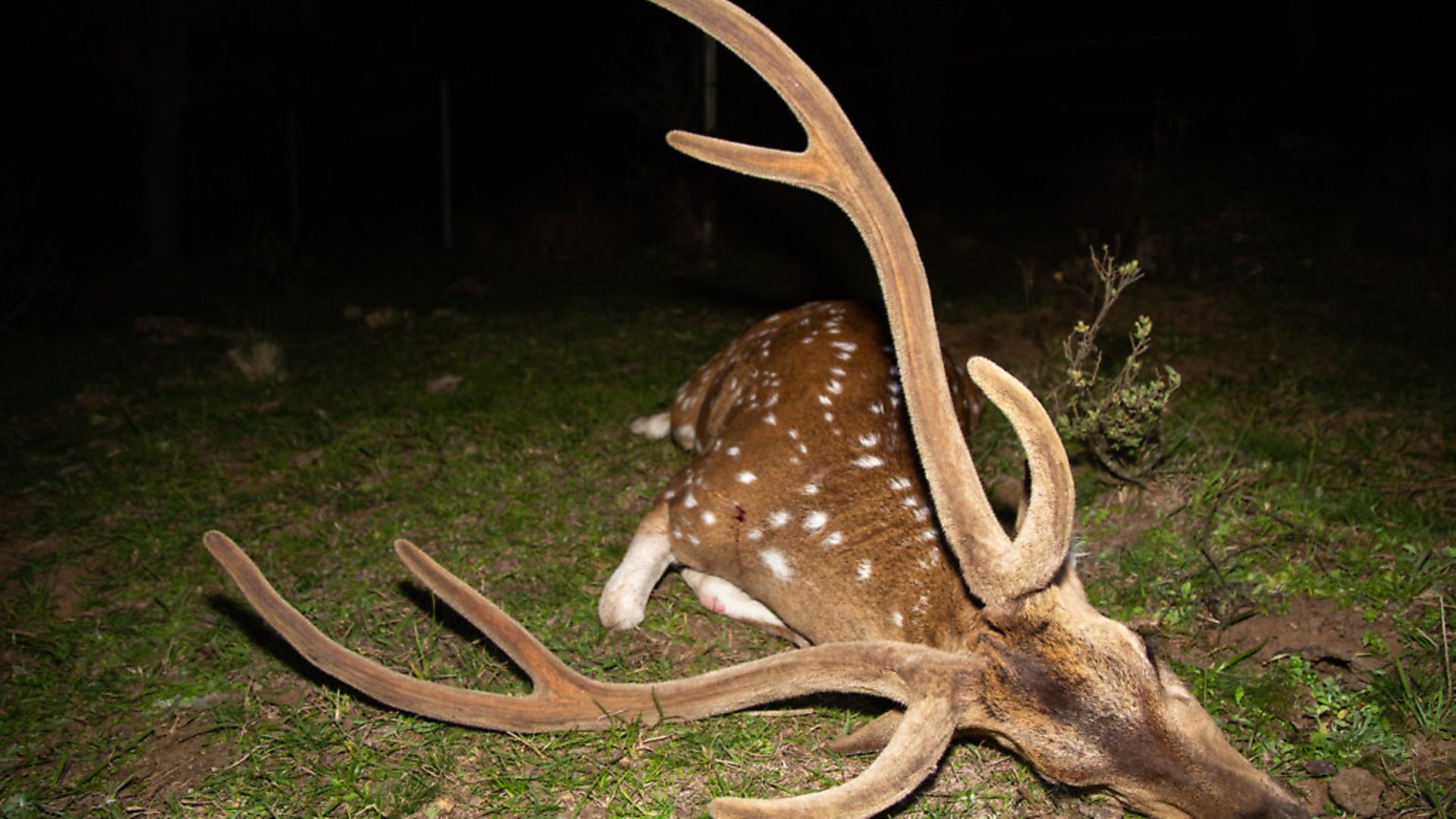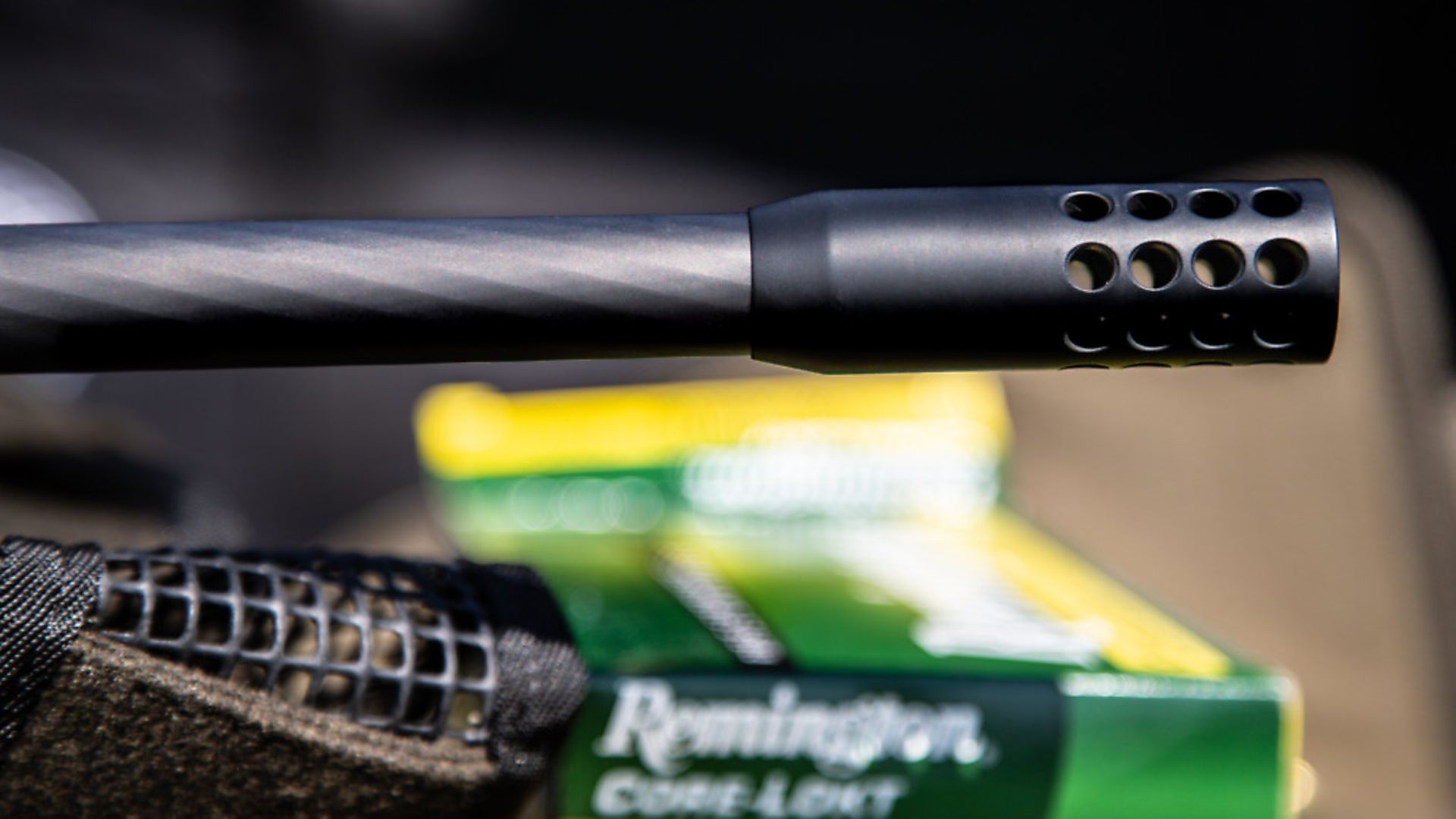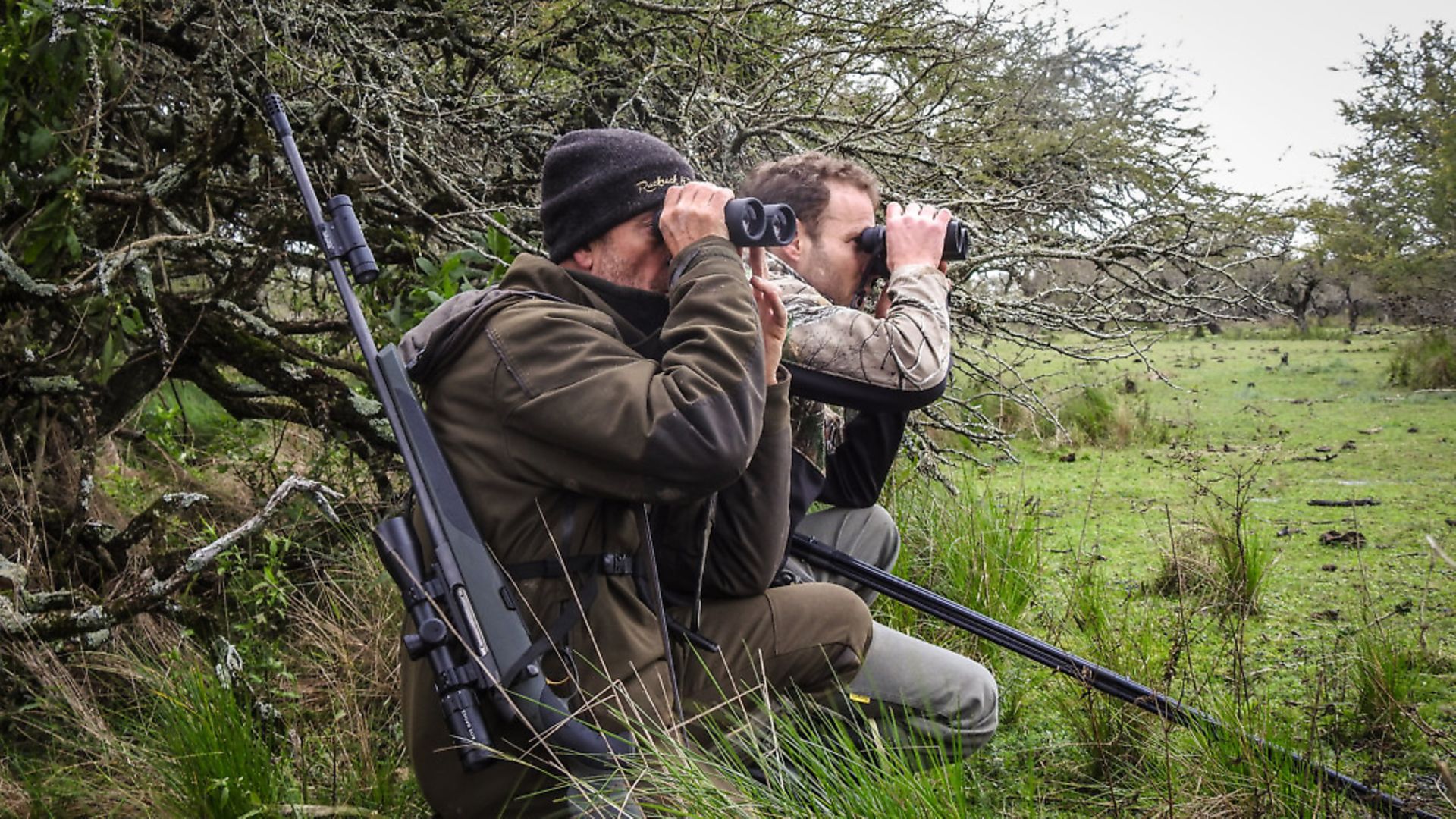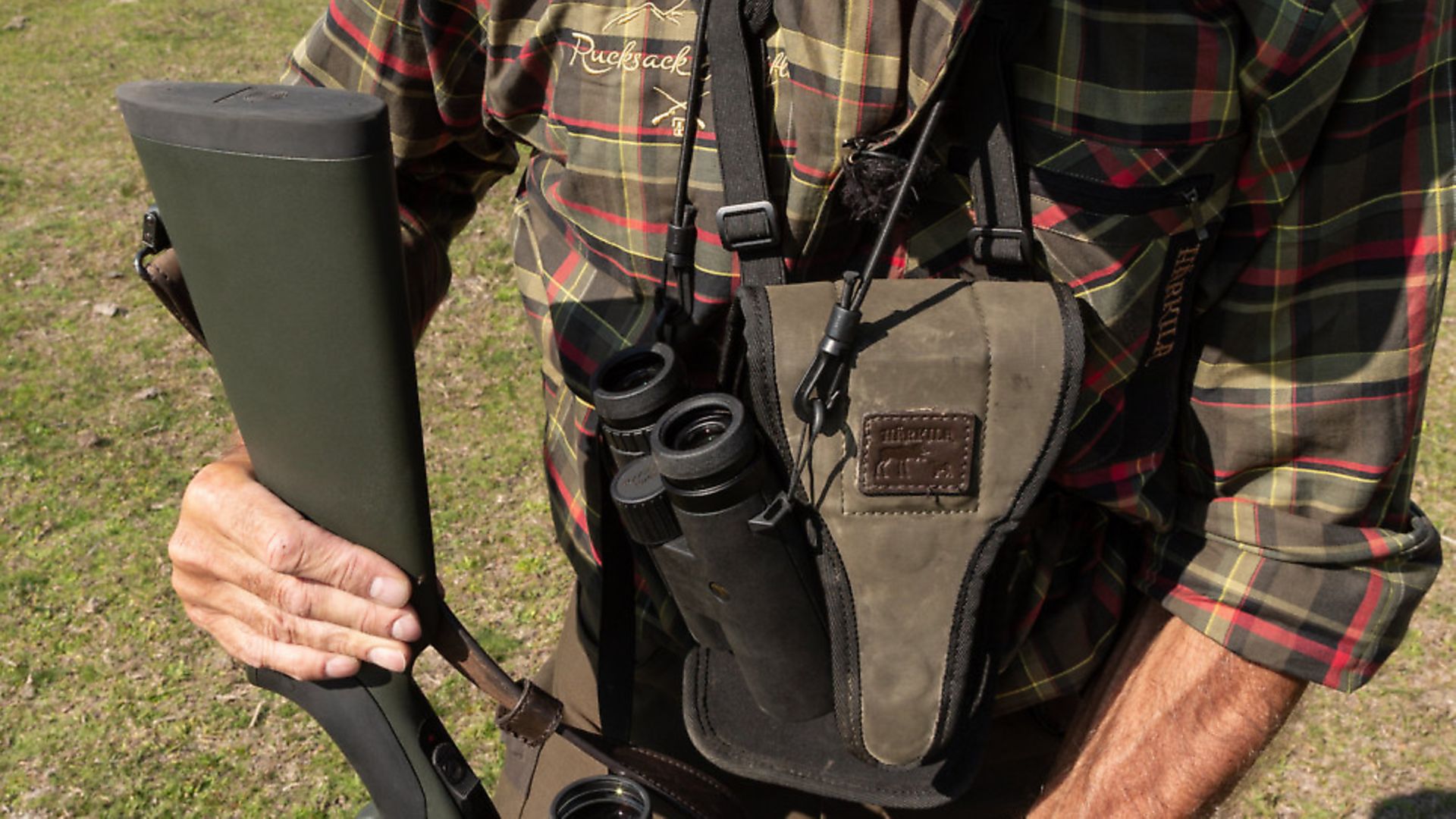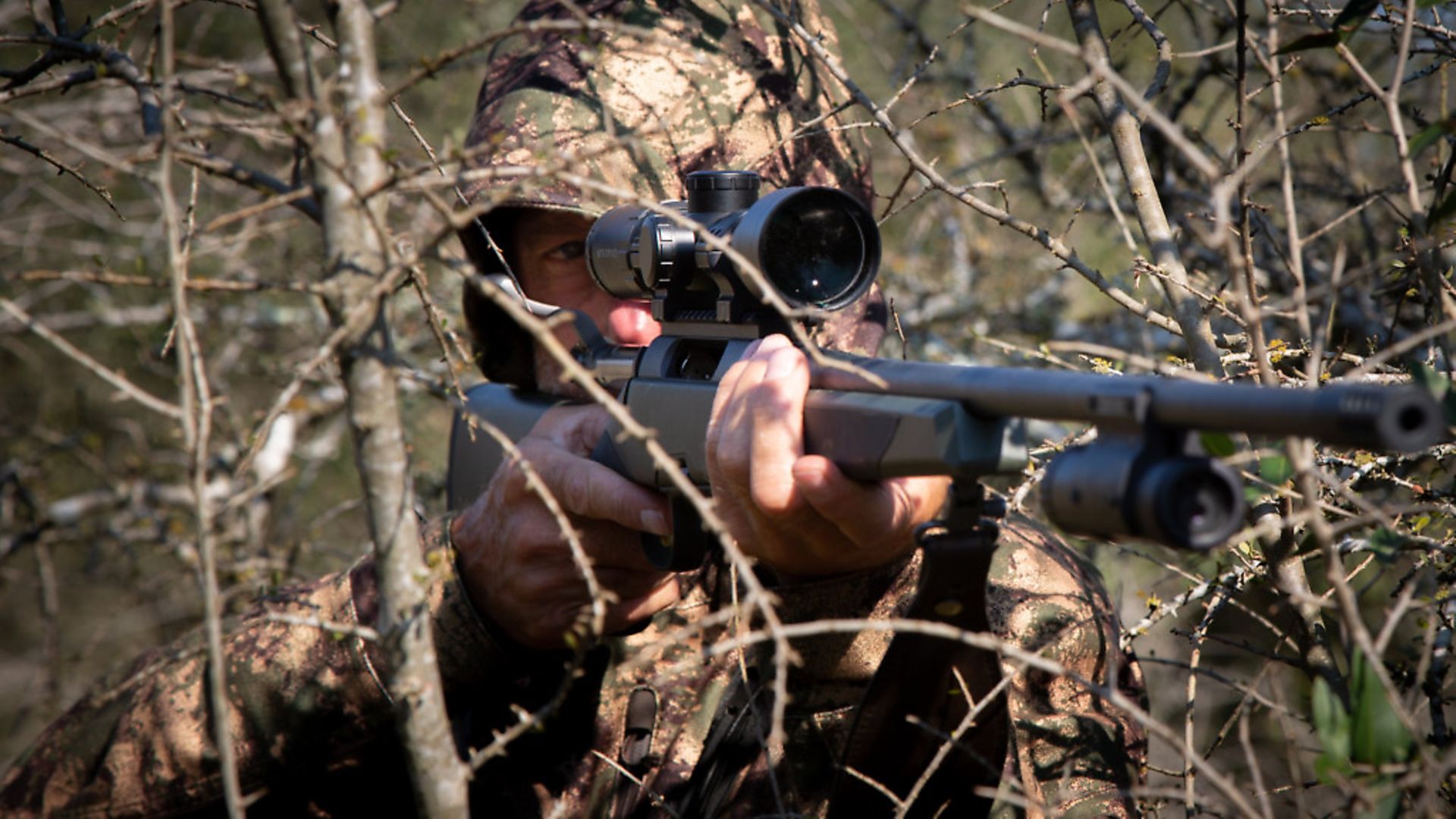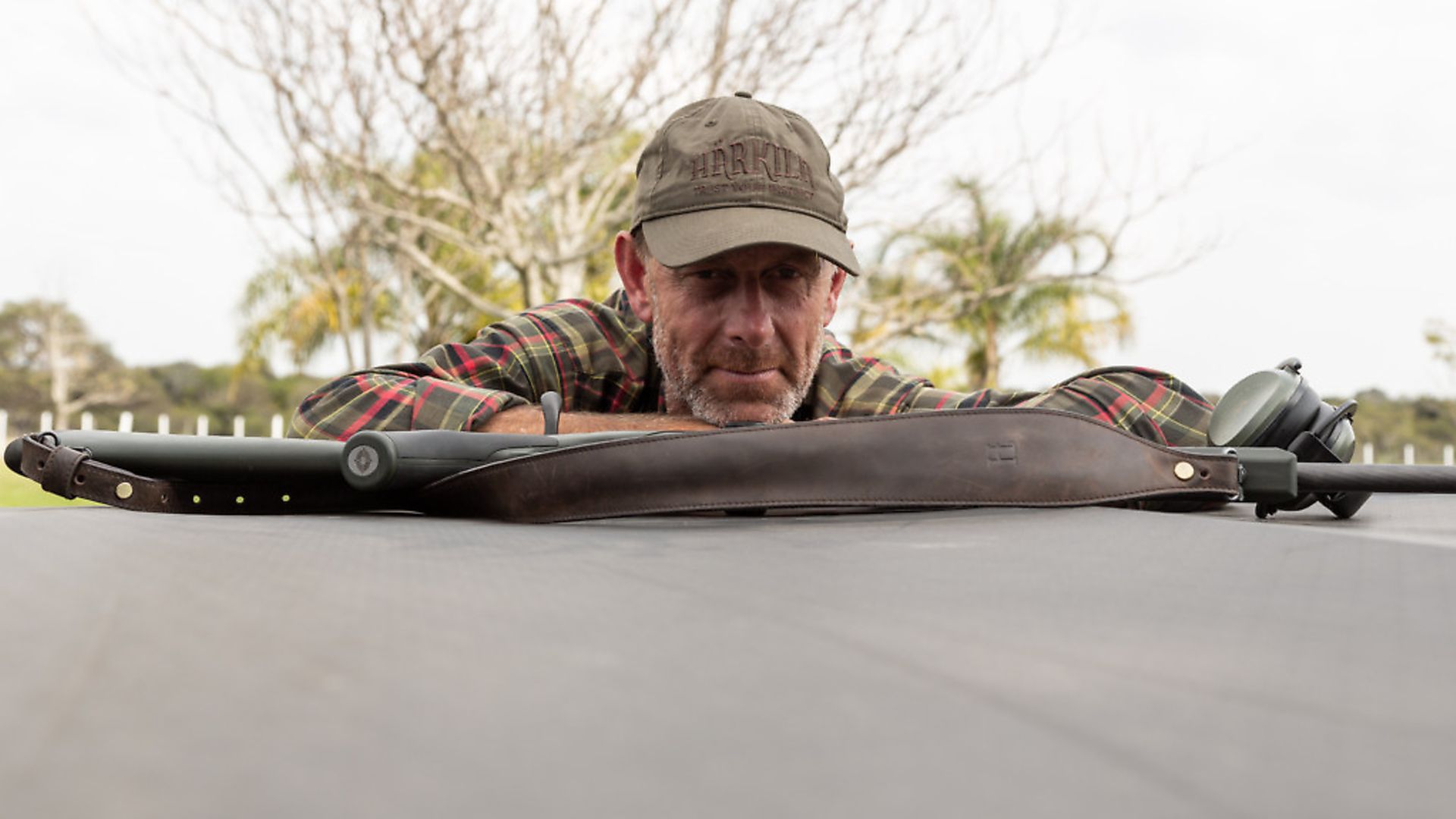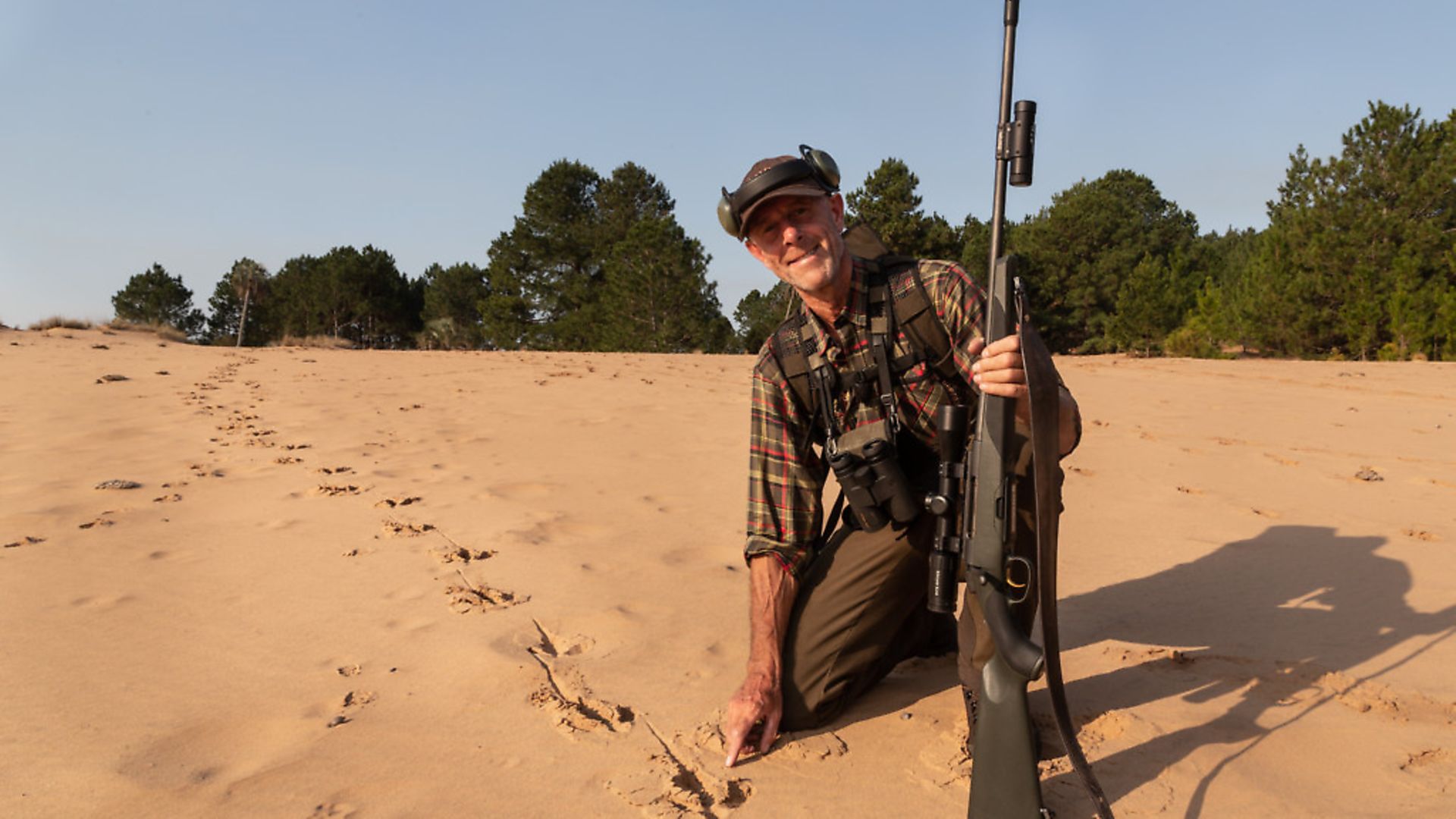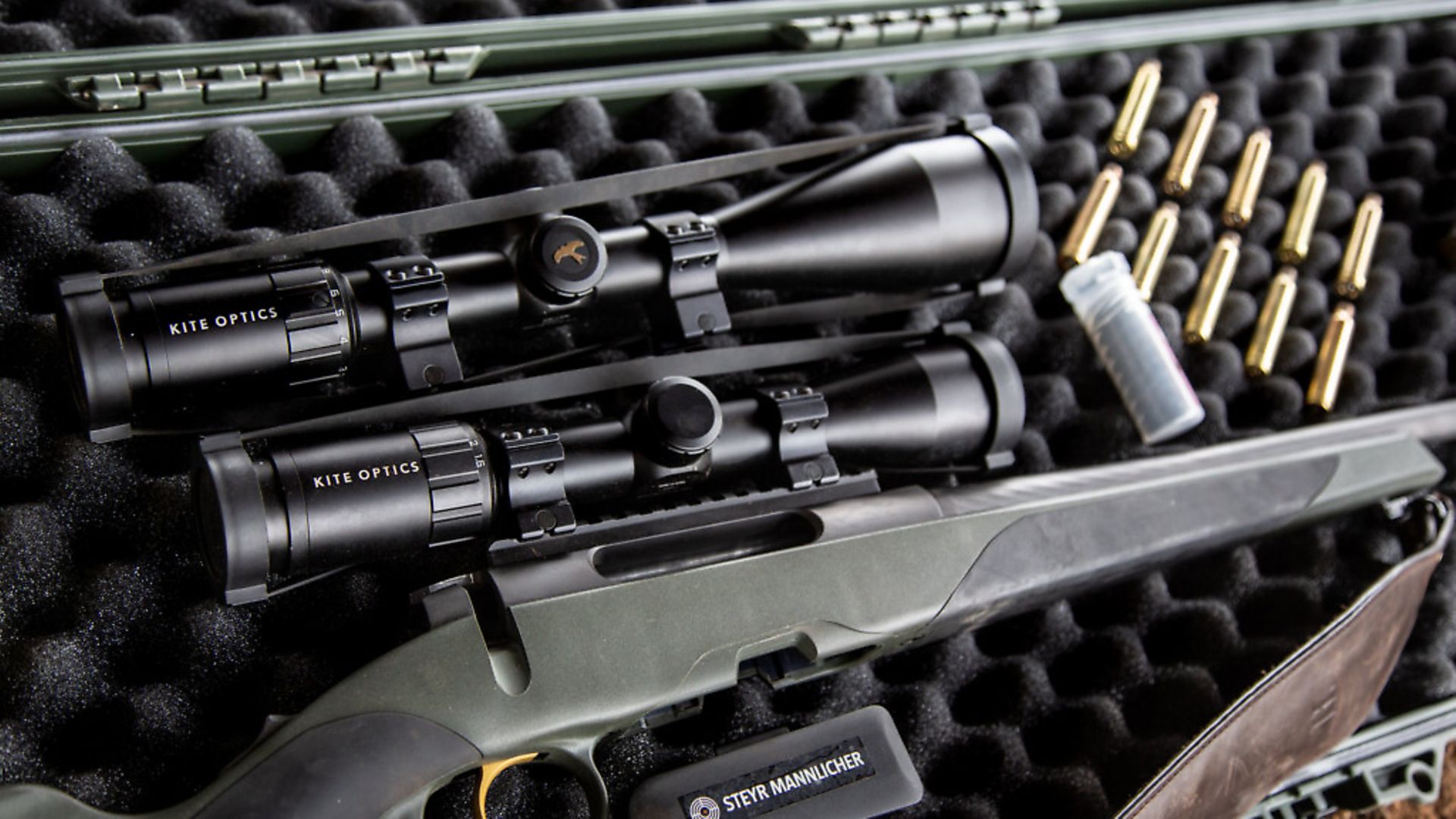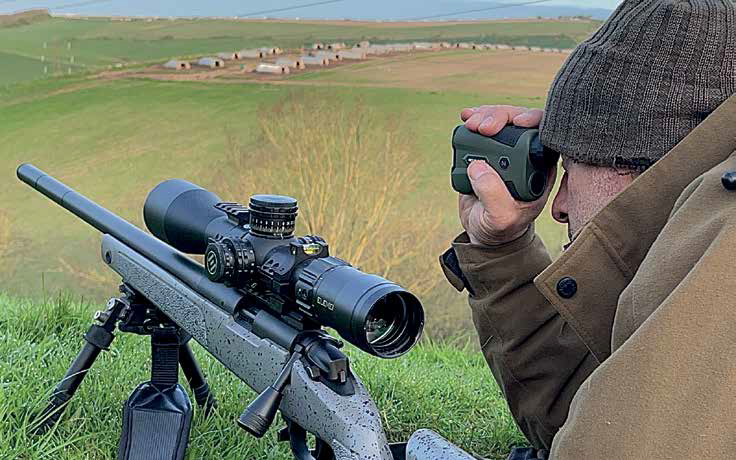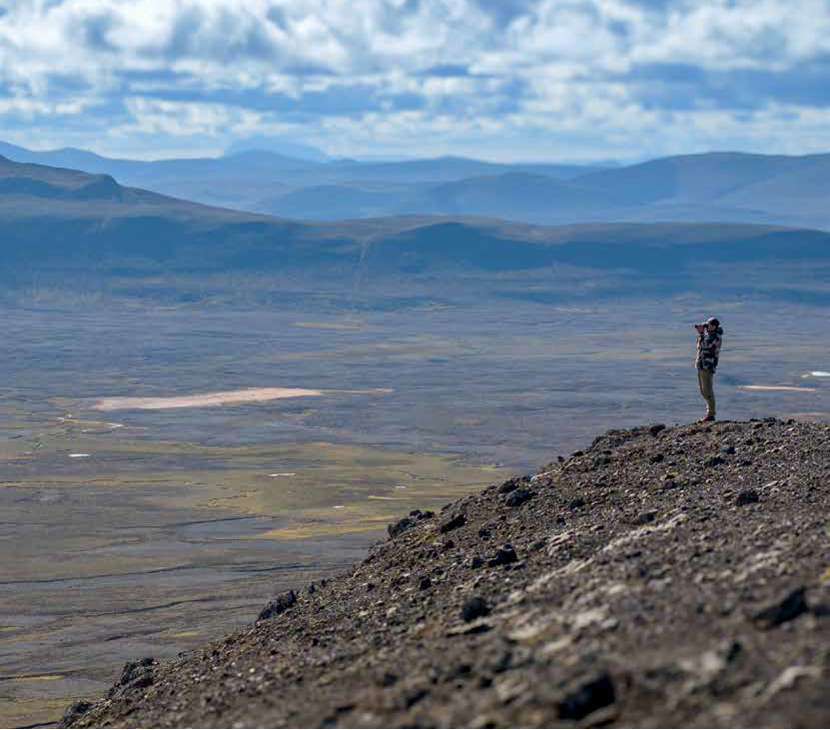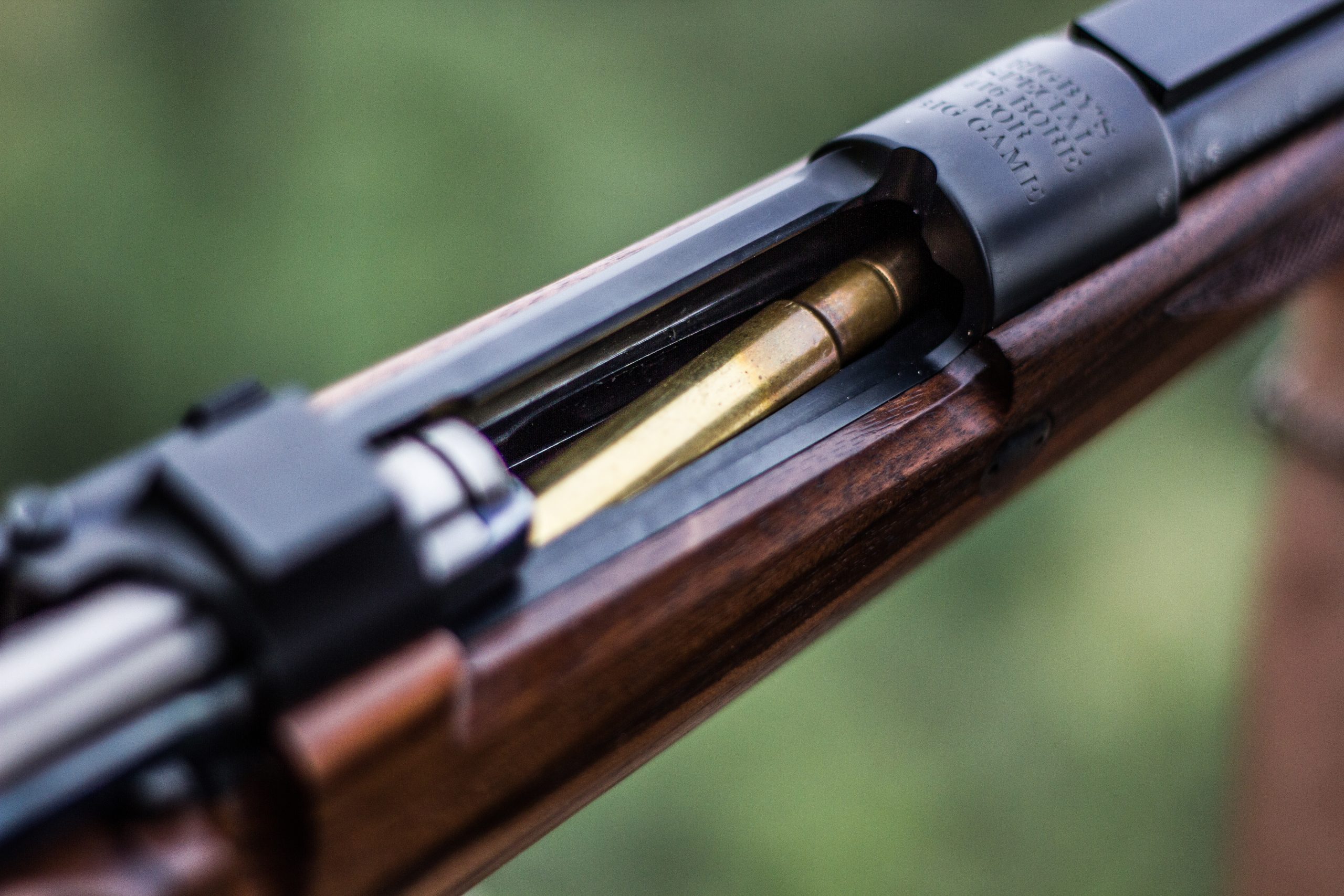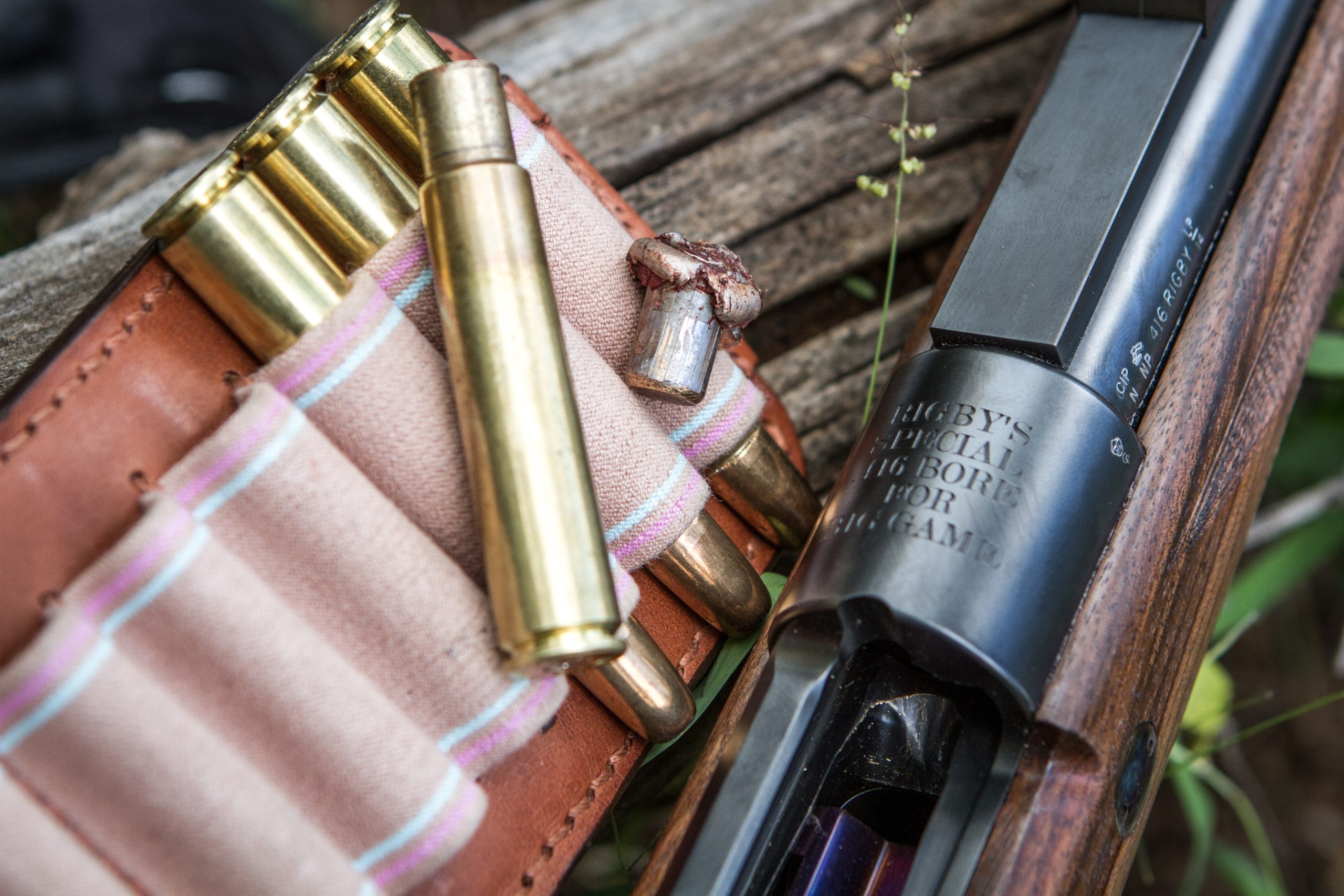Hunting axis deer in Argentina
Would you like to appear on our site? We offer sponsored articles and advertising to put you in front of our readers. Find out more.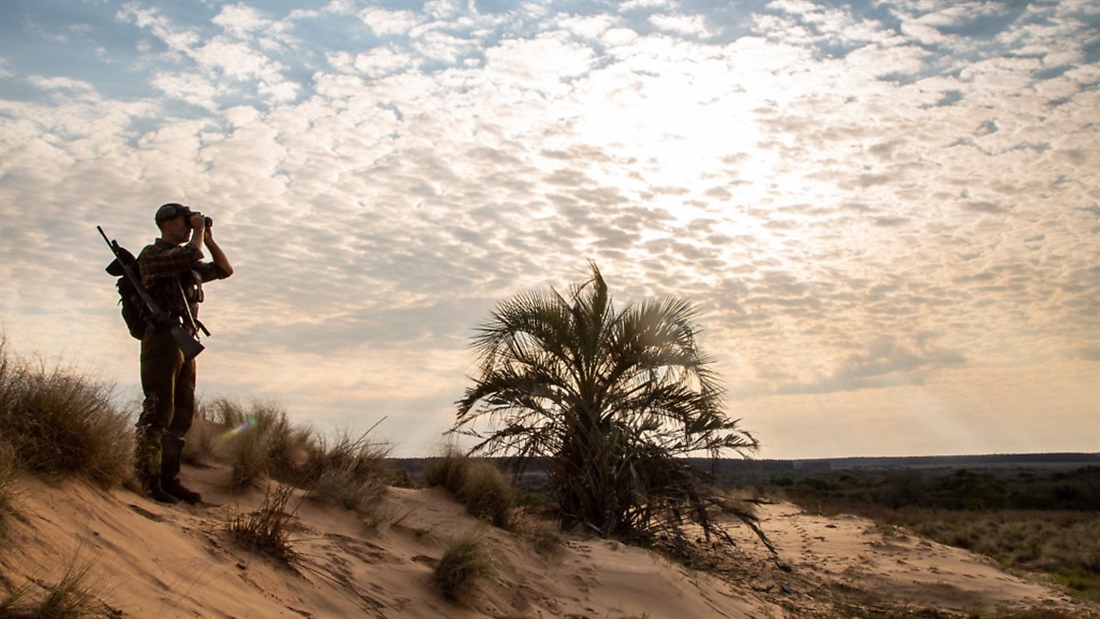
Tim Pilbeam sets out on a guelling hunt for elusive axis deer in Argentina, proving just how much dedication it sometimes takes to achieve success!
I am in Argentina, unguided at times, on landscapes I’ve never experienced before, trying to hunt one of the hardest deer in South America. During this month’s hunting tale, it took me 18 hours to realise that I needed help, but it has to be said, everything was against me – the light, changeable wind and some very alert game animals.
The elusive axis deer, a non-native species of many continents around the world, was introduced solely for hunting in Argentina from Asia in the late 19th century. They are a similar size to our fallow, but the bucks have very long, pointed antlers. They were hunted by tigers in their native country, so it is in their DNA to be wary and watchful.
Open land, as we eventually found out, is the best way to increase your odds of taking one. In Argentina, their numbers have increased to such a level that they are now a major concern to farmers, as they compete with other livestock for grass, and they are known to injure cattle with their sharp antlers. Like wild boar, being non-native means there is no closed season. They are a pest and need to be controlled – not an easy task when you have millions of hectares of scrubland covering a large portion of this massive country. Anyway, enough introduction. Here’s what happened:
Learning on the job
I land at Buenos Aires after a 13-hour flight and am greeted by my guide and friend Carlos. We head north for a further five hours to Concordia to stay the night, before arriving at our first hunting destination – an 8,000ha farm called Monegotes. Here they grow 4,000ha of eucalyptus, have many head of cattle, and several massive chicken sheds, among other enterprises.
This is a modern and diverse agricultural operation, bordering a national park. We are interested in this farm because they have to keep control of the deer population with only a few being taken every year, and guess what? We have been invited to do just that!
Once at Monegotes, we have a quick chat with manager Esequiel and study the map of the farm, before heading off to an area of land that overlooks the neighbouring country of Uruguay. We are in an unusual area, as we have a plantation of sturdy palm trees next to mature eucalyptus trees, but it is the area of sand dunes which makes the farm unique in this region of Argentina.
Esequiel’s instructions are simple: there are axis deer out here, but he has no idea where. Great! We are going in blind, and it would be rather useful to have a rough idea where they were last seen. Bearing in mind their reputation for being one of the trickiest deer to hunt, and being desperately short of sleep, this could be quite a challenge.
We stop next to the wide 3m-high palm trees, which are grown to be exported all over the world, and head south into the very light wind. The terrain is open for the first 1,000m, and then thick vegetation greets us making it very hard to see any game, let alone stalk quietly.
Carlos has been stalking axis over the past four weeks, so his eyes are already tuned in to these elusive animals. He spots a set of antlers moving to our left, some 200m away. I grab my sticks, but it is all in vain as this group is not stopping. More annoyingly, there were at least two mature bucks, which would have made Esequiel very happy if we had taken one. We had bumped them.
Lessons learnt: firstly, slow down, and secondly, I need to be very quick at taking a shot, which is more or less impossible when we need to film the hunt. A daunting start, but I have two weeks and many more opportunities to hunt axis. Little did I know that this was going to be a reoccurring theme for many hours of the trip.
As the light drops, we are told that on occasion some deer head towards the large lake that supplies water to the farm, so we wait up on the top of a ridge, hoping to see them move in the thick vegetation. As the light drops, I spot three animals on the far side of the valley and stalk in a little closer, but they are young bucks, too immature to take on this occasion. We head back to the gaucho quarters and grab some food, before going out night shooting after boar on the back of a pick up.
At 5am the next morning, with less than four hours’ sleep, we drop into the same area, but despite hearing a few high pitched calls we see nothing. As I walk back to the car, despite the time we had spent hunting, I am totally overwhelmed by the beauty of this country – I just hope we can improve our stalking skills!
Tensions run high
Carlos makes a few phone calls as we need an axis deer for the film, and the next day we arrive at another farm, owned by Augustine, an old school friend of Carlos. Once again, this farm has several eucalyptus plantations and fields of arable crops and cattle, but most importantly, they have axis deer roaming their property. They like to see them, so they only take a few every year for the pot. This time, Augustine is our guide.
We go out two hours before dusk, but once again the wind’s light and changeable. We catch a glimpse of a few, but they spot us first and sprint away without any hesitation. The next morning, we are up very early to ensure we get into the vegetation well before the light rises, but after four hours of walking around the mature eucalyptus plantations, no beasts are to be seen. Augustine cannot believe our luck as he had counted at least 25 axis in the open areas the day before. It is the wind that is making it more or less impossible to get close to them. Fourteen hours of stalking these timid animals with nothing to show for our perseverance. It can only get better. It needs to, as we need the film!
Two days later, a further three hours of driving up north takes us to Alfredo’s farm. I had visited it the previous year, where we chased wild boar on horseback with a pack of dogs. It was dangerous, but what an adventure! Once again, we start out at first light, but the indifferent wind and thickness of the bush makes this an especially hard stalk. While the axis may be very timid and alert, they also tend to hide, using their white spotted coats as camouflage. On two occasions, we are within 25m of them, but as soon as we stop and ready both the rifle and the camera, they are off! So near yet so far, not helped by the temperature rising to 25°C, which for the winter months is very unusual.
We call it a day after another four hours. We return that evening, but this time I spot a young female standing some 80 yards away. I walk forward very slowly, giving myself a wider arc of fire just in case the deer moves, but unbeknown to me, Carlos has not moved with me.
I ready my sticks and ask if he is OK, but he is not with me. I have to wait as he creeps up towards me, but the animal moves forwards with a tree now covering the chest area. I wait, but it lopes off very gently and completely disappears into the scrub. Where has it gone? I cannot believe our bad luck!
Carlos is annoyed with me as I did not tell him what I was doing, and I am frustrated with him as he did not read my mind! We are running out of time as we have many other animals to hunt.
Walking with buffalo
We have the opportunity to hunt buffalo on the neighbouring property in a couple of days’ time, so we decide to go over to acquaint ourselves with our host for the next two days. Over lunch, farmer Esteban takes pity on our lack of success with the axis and offers to take us out stalking on his property. Within a few minutes, we quickly change into our hunting gear with gun and cameras at the ready.
We are soon driving around the farm, seeing many mean looking caimen and capybaras among the wide variety of native birds. On one occasion, we run after a huge boar that is drinking from one of the many lakes, but we lose it in the thick bushes. We’re certainly not having much luck. As the light starts to drop, Esteban takes us to his usual guaranteed banker for deer – an open 100ha paddock that borders thick wetlands and bush.
Within an hour, we see 40–50 deer slowly emerging from the woodland; however, they are all 500m away. A decision has to be made quickly, as the light is swiftly dropping, so we walk in single file towards the deer, rather hoping another new group to our left will not see us. The huge old bull water buffalo standing to our right is more of a challenge. We need to give him a wide berth of at least 300m. If he smells or spots us, he will rampage down the paddock and clear the area within seconds. I cannot believe we are stalking around buffalo!
This is one of the last chances we will get, so we go for it, walking at speed. We stop, the sticks are put up in front of me, but the deer are now moving towards the forest edge. There must be over 60, and they have seen us! Esteban and Carlos pick out a mature trophy buck that is still 300m away. As I look through the Kite Optics KSP HD2 1.6-10×42 scope, all I can see are several large bucks among the gathering. They all come to a standstill, looking in our direction. It is all happening so quickly! It’s now or never.
I squeeze the trigger of the Steyr SM12, but at the same time the buck lurches forward. The bullet goes over its back, and within a few seconds, the area is devoid of all living animals! What do I have to do to bag myself an Axis deer? Another three hours of hunting and still nothing to show for our efforts!
We head back to Alfredo’s for food and rest, but the night produces one of the most spectacular thunderstorms I have ever witnessed, together with several inches of rain. We are marooned at the farm, as the dirt roads that link all the properties are more or less impassable. The buffalo hunt at Esteban’s is off. His gaucho hunters are dealing with the aftermath of heavy rain on the farm, but he calls us to say that if we can get to him, we can go out again!
We have to give it a go or stay indoors and feel miserable. The roads are like gooey chocolate, but within three hours and 10 miles we are back stalking. We end the session by taking a large boar in the same paddock where we saw the axis deer the previous day, but it is not until the next day that we manage to eventually find ourselves an axis deer.
The 13,000ha farm has been owned by his family since the 1970s, and over the years they have cleared areas of scrubland to increase the production of grass for the cattle. While there are a few open paddocks, much of the farm still has sparse bushes and trees to improve the hunting. Together with many lakes, the farm is a fully commercial enterprise with agriculture and hunting working closely together. As we now know, hunting axis deer in thick cover can be highly unproductive, but in the more open areas, it becomes much easier… well, in theory!
We spot a large herd of deer some 400m away, and stalk closely towards them. It seems there are beasts everywhere, but no matter where we go, they see us and spook everything in the area. We wait up for 30 minutes and see a large group passing by at 200m away. They are obviously aware that something is not quite right and stay together as a tight group, but one of the animals at the back catches my eye.
With sticks ready, Esteban points to the handsome buck. It stands for a few seconds, looking in our direction. There is a fallen tree lying in front of it, so all I can see is the chest. Instantly, I drop my .300 Win Mag Steyr SM12 rifle onto the sticks and quickly pull the 2lb crisp trigger. The muzzle lifts abruptly. I know it is a good shot, but I see the animal running off to our left. Have I missed it?
We quickly head off to the original position of the deer, only to spot it some 75 yards away. These beasts take some knocking down! What a beautiful animal. It is a four or five-year-old male with a perfect head, but it is the colouring and markings of its coat that take my eye. How can it be so effective in the bush? We have our axis, but I have lost count of how many hours we have been hunting these deer – it must be at least 24 hours!
Challenge completed
Two days later, we are out hunting boar further up north on the back of a pick up and come across a male axis. Jose, the farmer and the driver shout at us to shoot it quickly, so I do. We then find out that they see them as a pest, as they chew the young eucalyptus saplings once planted in his huge fields. Some farmers like to see them and some want them removed! Mind you, they eat well, so that may also be taken into consideration.
As we drive back towards Buenos Aires, we pop into Monegotes again to see Esequiel for a quick evening stalk, and manage to shoot a mature buck at 200m – the perfect management beast the farm wanted us to take. We sat ourselves on the top of a valley and glassed a large area of bushland, and from nowhere he appeared. They are not easy to spot! Despite being in velvet, Esequiel was very happy, but not as happy as the gauchos who quickly butchered it within an hour of bringing it back to the farm.
So, what do I think about the axis deer? They are so challenging, and in some ways mystical. Similar to the fox, the hunter has a love or hate relationship with them. To some it is pest control, to others it is management. A fallow is probably 10 times easier to stalk compared to the axis. Axis deer have an in-built survival programme that makes them so tricky to hunt. I think we were very unlucky and maybe a little naïve, but considering I was hunting them in their own back yard of thick bush, what did I expect? The amount of times I missed them as they hid in the dense vegetation just shows how canny they are.
Once again, the opportunity to go in solo into unknown ground without a guide is always a high-risk strategy, but that is just the sort of challenge I love to take on.
If you are interested in hunting boar, buffalo, axis or red deer, doves and ducks in Argentina, please email Tim at tim@rucksackandrifle.co.uk (he can recommend a few reputable and trustworthy outfitters!)
KIT USED
Kite Optics, KSP HD2 1.6-10 x42 Scope
Objective lens: 42mm
Field of view: 11.4 – 4.2m
Eye relief: 101mm
Length: 320mm
Weight: 574g
Tube: 25mm
SRRP: £1,130
Importer: Browning UK
Kite Optics, Toucan 8 x 42 Binoculars
Exit pupil: 5.25mm
Field of view a 1000m: 133m
Eye relief: 18mm
weight: 712g
Warranty: 30 years
Importer: Browning UK
Steyr Mannlicher, SM 12 SX in 300 win mag
Weight: Approx. 7.7lbs (3.5Kg)
Barrel Length: 26”
Stock: Green Synthetic with Polymer Inlays and Aluminium bedding block
Over Length: 47”
Calibres: .222 Rem., to 9,3×62
Magazine capacity: 4 + 1
RRP: £1620.00
Importer: Sportsman Gun Centre
Related articles
AN ICELANDIC SAGA
A relentless search across Iceland’s volcanic landscapes takes Simon K Barr to the ultimate prize – a mature bull reindeer and an unforgettable hunting experience
By Time Well Spent
Get the latest news delivered direct to your door
Subscribe to Rifle Shooter
Elevate your shooting experience with a subscription to Rifle Shooter magazine, the UK’s premier publication for dedicated rifle enthusiasts.
Whether you’re a seasoned shot or new to the sport, Rifle Shooter delivers expert insights, in-depth gear reviews and invaluable techniques to enhance your skills. Each bi-monthly issue brings you the latest in deer stalking, foxing, long-range shooting, and international hunting adventures, all crafted by leading experts from Britain and around the world.
By subscribing, you’ll not only save on the retail price but also gain exclusive access to £2 million Public Liability Insurance, covering recreational and professional use of shotguns, rifles, and airguns.
Don’t miss out on the opportunity to join a community of passionate shooters and stay at the forefront of rifle technology and technique.



